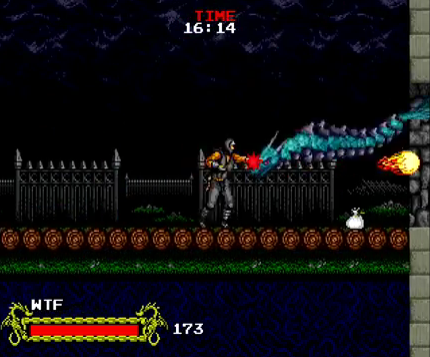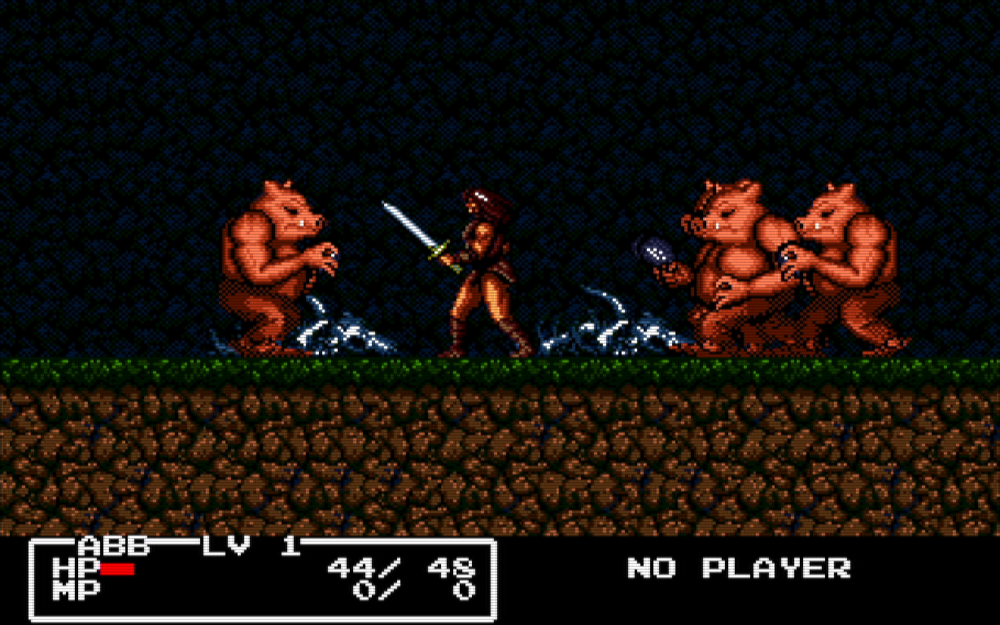
It could be said that if you wanted to make a good profit with a video game, be it now or in the 80s or 90s, the “dragons and wizards” angle has never been a bad way to go. This is a culture that embraced Conan the Barbarian in film 46 years after his original author-creator’s death (the film came out in ’82, while Robert E. Howard died in 1936), and it’s the same culture that’s currently obsessed with Game of Thrones. My personal favorite medium for the genre, Dungeons & Dragons (which I never fail to mention whenever there’s even a remote reason to), is in its 5th edition of rules and still has a strong base of adherents. Barbarians, trolls, demon princes, and magic swords are perennially totally cool.

So is Cadash, a game I’d only heard of in passing, but that was mentioned to me in a recent conversation by a friend who has a distant interest in retro gaming. “If you’re into D&D but you like Golden Axe, too,” he said, “check out Cadash. It’s basically a mix of both.”
He wasn’t entirely on point, but his heart was in the right place. Cadash hit the arcades in 1989, so it was kicking around them the same time I started to; what surprises me more is how I missed the Genesis port in 1992. It was also released for the Turbo Grafx 16, which is how I recently subjected myself to it (since nearly every MAME32 emulator runs like utter shit on my computer). It’s a pretty fantastic game for its time, combining elements of the RPG and the platformer with some gnarly graphics. It’s got some pretty good sound to boot, but the arcade version seems to come out ahead in that regard.

Cadash‘s story isn’t very complex, and you really wouldn’t want it to be: A demonic warlock born of a human woman has rallied the monsters of the underground kingdom, who have never forgotten their banishment by the humans. The overworld is nearly in ruins, and this warlock (called, with various spelling variables in the three versions, the Balrog) has kidnapped the daughter of the King of Dirzir to use in a ritual that would truly solidify his evil power and doom the human world. Of course, in the custom of video game RPG kings, the ruler of Dirzir has promised you his entire realm if you can save his daughter and finish the Balrog once and for all.

The arcade version, if configured the right way, could handle up to four players, but the console versions were 1-2 player games. The players choose one of four classic fantasy RPG roles: the fighter, mage, priestess, or ninja. Each one has its ups and downs, but the game’s pretty approachable with any of the four. Single players might have a better time with the priestess though, as she’s got a good reach for her weaponry and a lot of defense-oriented powers. The fighter and the mage have a lot of offensive power, although the fighter’s much better early on and harder to kill. The ninja’s, well, a ninja. He moves very quickly and has some neat tricks up his sleeve. Sadly, the Genesis port has only the fighter and the mage, so if that’s how you experience Cadash, I hope one of those suits you.

Regardless of who you pick, you use gold from slain monsters to gradually beef up your equipment, and your capabilities increase as you gain levels as well. All of this progress is fueled by killing monsters, but you can’t just wander idly and do that all day (at least not in the arcade version)… there’s a time clock you have to keep feeding. This can be done with rare item drops or by dumping heinous gold at shops where you buy other stuff. This element adds another layer of strategy to the game, where a player or group must measure the clock against their need to level-grind. There’s not really a dull moment in Cadash.




Screenshots from various versions, offering a sample of what’s constantly trying to murder you beneath the ground. Click to enlarge.
The five areas of the game represent the already-conquered territory of the Balrog’s forces; you must fight your way through all of this, and not always in the most linear way either. For instance, at one point you have to double back and save a mermaid from a kraken to get an item that lets you breathe water… and then you can keep moving ahead by swimming through a flooded area. All said, none of it’s very confusing, and the action’s pretty engaging. You can swing your weapons in various directions, which is handy since there are a lot of foes who will come at you from above or below. A lot of the monsters bear superficial resemblance to the orcs, goblins and other standbys of fantasy media; others are just weird. You move through environments mundane and strange, from caves to villages to places where the whole floor is just crunched-up bones. The world of Cadash has heavy hitters too; periodically there’s a boss monster waiting to add your name to the hero obituary.

The graphics are very crisp and colorful, and seem to translate well to the console ports with very little loss of vibrancy. With an original palette of 4,096 colors, it’s not a drab game by any measure. Cadash also has decent sound, although SFX are sparing; the music is respectably well done, but sometimes seems a bit meandering. Some loops can even be a bit maddening, but that almost seems appropriate. Nitpicking aside, it’s worth exploring the soundtrack for the handful of good tunes in it.
Cadash merits a strong 8 out of 10. It’s a title I’m sorry I missed in arcades, but the gameplay I’ve seen for the arcade original leads me to believe that my experience on the TG-16 is pretty authentic. It’s a great melding of action and RPG elements, it’s got a lot to keep players engaged and sweating, and its over-the-top fantasy elements make it memorable among its contemporaries of the time.




